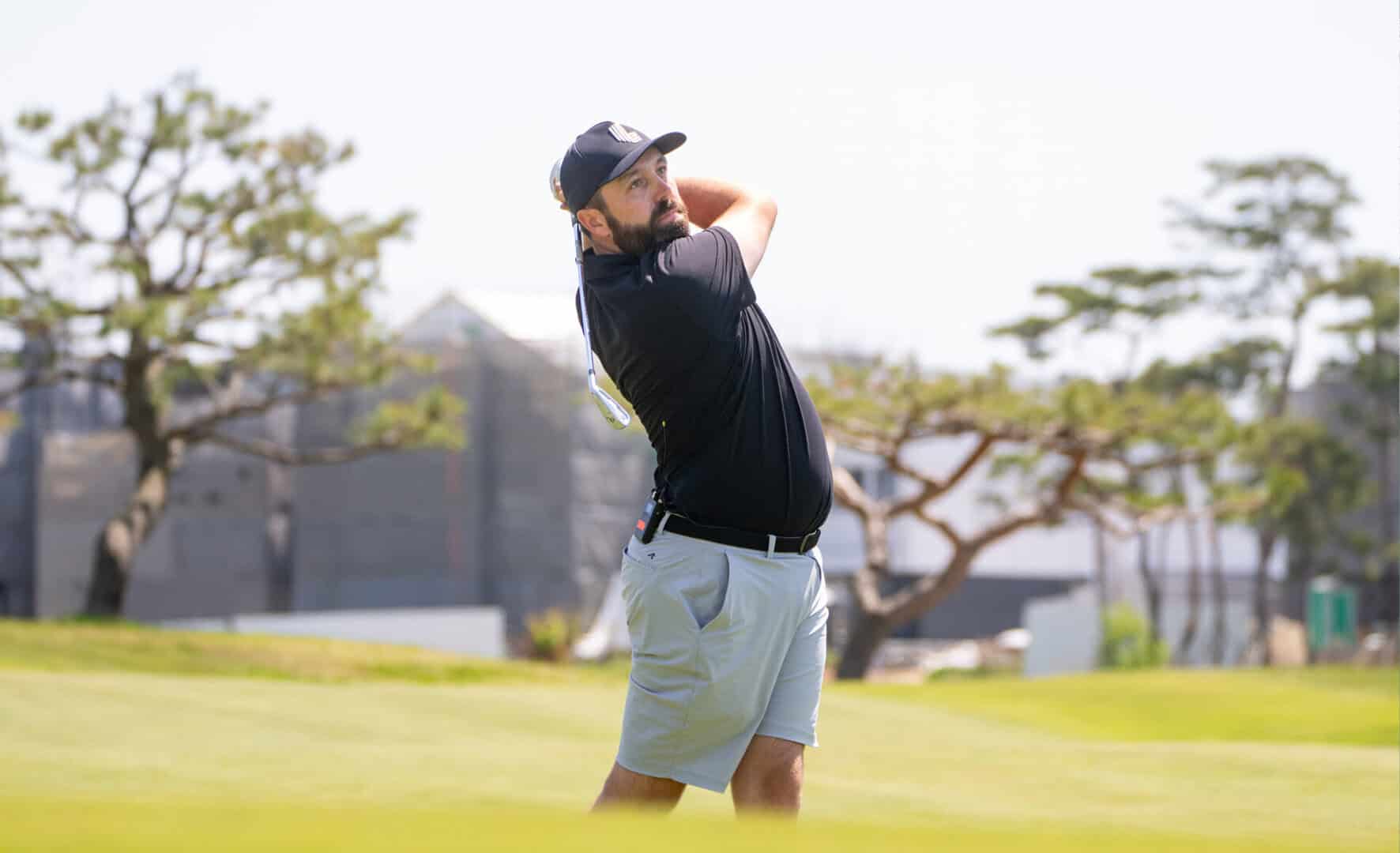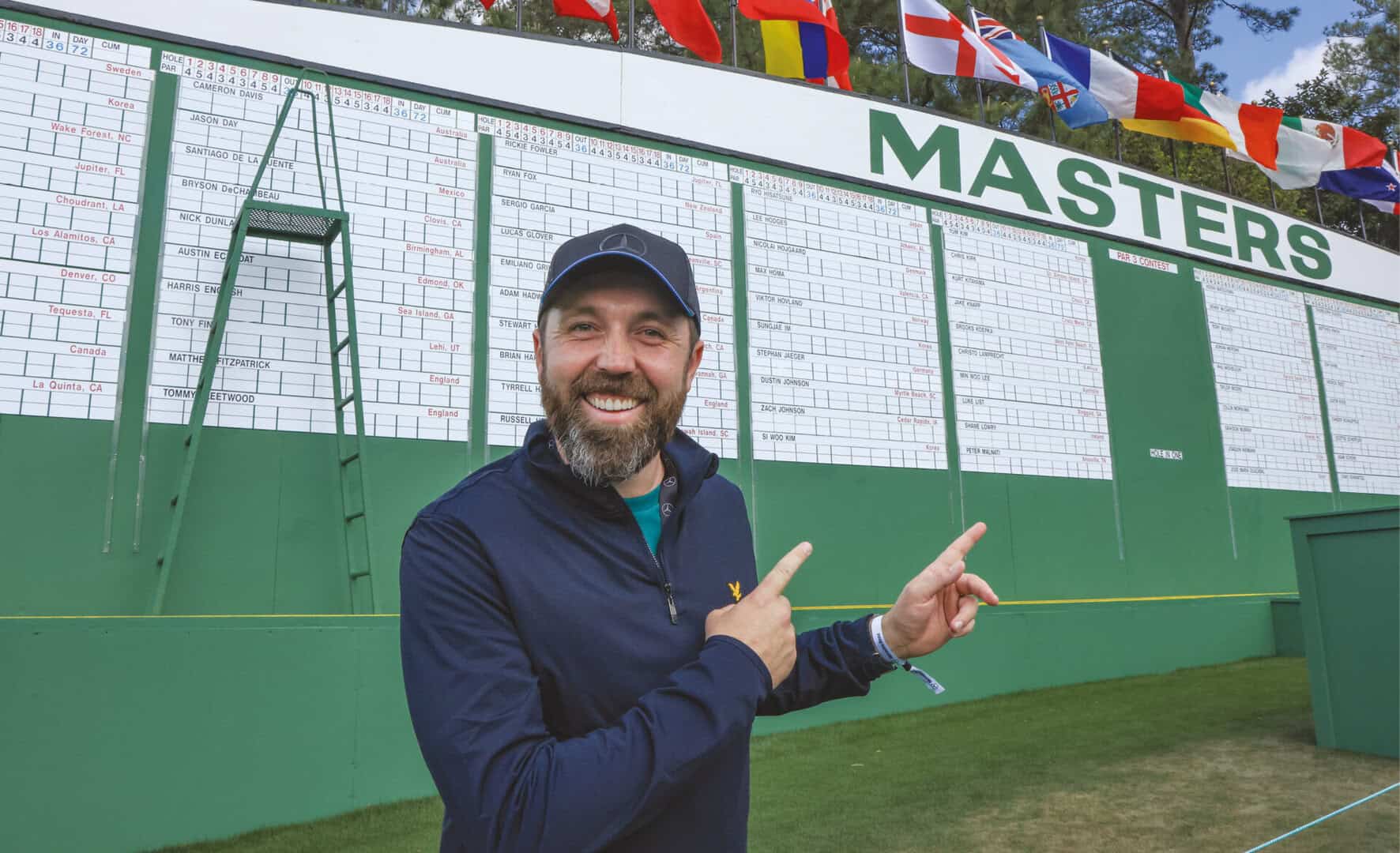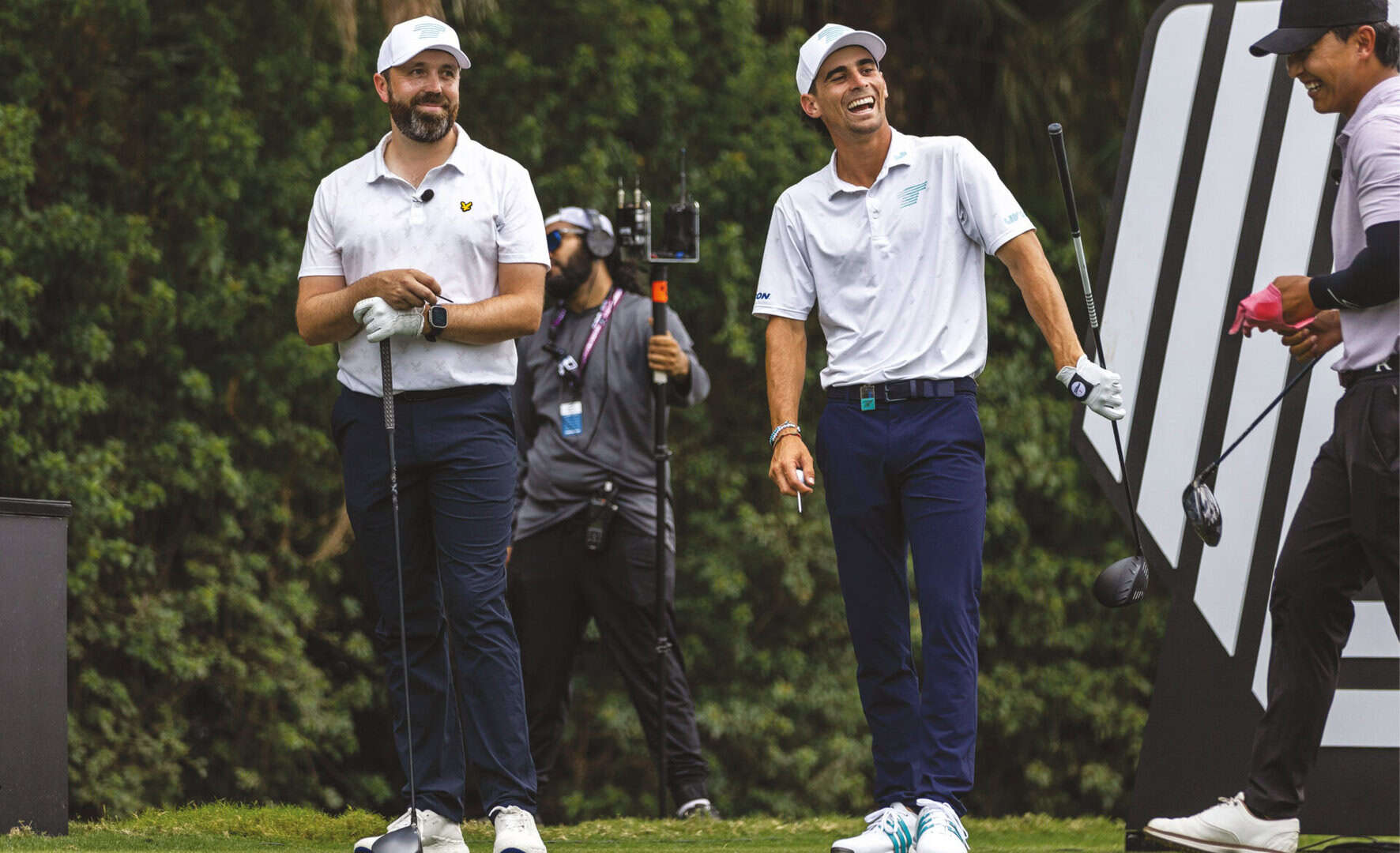Rick Shiels has redefined what it means to teach, entertain and inspire golfers around the world. In this exclusive interview with Alex Gallemore, the PGA pro turned content powerhouse shares the story behind his meteoric rise, his passion for growing the game, and what keeps his videos fresh after thousands of uploads.
If you’re a golfer with a smartphone, chances are Rick Shiels has popped up in your feed, probably holding a driver, squinting at a launch monitor and telling you whether the latest £500 rocket launcher is worth the hype. He’s the everyman voice in a world of polished tour stars, a PGA pro who swapped the safety net of the lesson bay for the rollercoaster of content creation, and wound up with more subscribers than most TV golf shows could dream of.
What started in a chilly corner of Manchester, just Rick, a tripod and a hope that a few locals might book a lesson, has exploded into a global phenomenon. He’s played with the game’s giants, critiqued every club under the sun, and jetted around the world filming with LIV Golf’s biggest personalities. Yet, through it all, Rick still sounds like the lad you’d bump into on the range, just with a few million more friends along for the ride.

Let’s go back to the beginning. When you fired up that first camera, did you really think it would end up here, two and a half thousand videos, millions of subscribers and a passport full of stamps?
Not in a million years. It’s still mad to think about. I started my YouTube career 13 years ago because I needed more people coming through the door for lessons. Back then, YouTube wasn’t a business model; it was an advertising tool. I’d make videos about grip and swing tips, and hopefully, someone would ring up and say, “I saw your video, can I book a lesson?” For a while, that was it. No revenue, no sponsors, just me trying to keep my diary full. A couple of years later, the channel started to get a bit of traction, and I realised there might be something bigger going on. I thought, Hang on… there’s potentially no ceiling to this. That was when it clicked: this could be more than a side hustle.
You’ve literally travelled the world, camera in hand. How surreal has that been?
Incredible. I’ve been to the States more times than I can count: Dallas, Orlando, San Diego. Last year, I travelled to Adelaide, Miami, Jeddah and Riyadh. You find yourself on the tee thinking, How did I get here? And then you just crack on and do your job. That’s what’s so brilliant about golf; it opens doors you never even knew existed.
You’re no stranger to Dubai. What is it about this place that keeps you coming back?
Dubai’s just got it all, hasn’t it? Great golf courses, unreal weather (most of the year), and that big, welcoming clubhouse culture. Every Christmas and New Year, my family and I head over; we’ve been doing it three or four years straight. We’ll play a bit of golf, take the kids to Topgolf, have a few nice meals. Night golf in particular is something I think the rest of the world could learn from. The Faldo Course under the floodlights is spectacular and Topgolf Dubai, wow. That place is colossal. You’ve got non-golfers, families, serious players all in one space. It’s the most inclusive golf environment I’ve ever seen. We could do with more of that back in the UK, where golf still feels a bit stiff sometimes.
If you had to be critical, anything you reckon Dubai hasn’t quite nailed yet?
If we’re being picky, I still think golf globally lacks that middle step between the range and 18 holes. Imagine six-hole courses, just an hour of golf. You get your fix without giving up your entire day. For beginners, it’s less intimidating. For established golfers, it’s a way to keep sharp. Dubai is already leading the charge in innovation, so if anywhere’s going to build a network of short courses, it’ll be here. They’d probably do it in style too, with floodlights, music playing, great food and drink.
Let’s say you’re teeing it up out here; would you set up your bag differently for Dubai’s conditions?
One of the skills in Dubai is launching the ball high; it’s not that windy, and the greens are firm. If I was playing out there tomorrow, I’d probably bin my three-iron and put in a five-wood or maybe even a seven-wood. Those clubs have exploded in popularity because they’re so easy to launch. You need the height to stop the ball. Unlike links golf, you can’t bounce it up. And if I’m being honest, part of the fun is tinkering. The launch monitor numbers, the shaft swaps; I still love it as much now as when I started coaching.

You’ve played alongside some serious names, Rahm, Hatton, Fleetwood. What’s your first thought when you step onto the tee with guys like that?
Just how good they are. Different gravy. I’ve known for a long time the gap between club pros and tour players. I remember turning pro at 18, trying to chase the dream. I shot one or two under in a local event and thought, Right, that’s me, winner’s speech ready. I lost by six. That was the moment I realised, I don’t have that gear. Since then, I’ve spent time filming with some of the best in the world. When you watch Tommy Fleetwood carry his own bag in December, hitting it like it’s the middle of summer, you understand how special they are.
You’ve mentioned Niemann’s bunker play before; what makes it so good?
Honestly, it’s filthy. Every time he’s in the bunker, you think he’s dead. Then he pulls off some ridiculous flop shot to three feet. I reckon Pete Cowen must take a lot of credit. He’s probably one of the most influential coaches in the world, and you can see his fingerprints on their wedge play.

Is there one player who struck you as being cut from a different cloth?
Rahm. No question. He is an animal. You see it in everything he does. He wants to win absolutely everything; it doesn’t matter if it’s a Major or rock-paper-scissors. You can feel that competitiveness pouring out of him. It’s the same with Tyrrell Hatton and Bryson. All the top players are wired the same way. They hate losing more than they love winning. That’s the biggest difference between elite tour players and everyone else. The talent is obvious, but the mindset, that refusal to lose, that’s what sets them apart.
You’ve made two and a half thousand videos. How do you keep it fresh when everyone’s tracking your numbers?
You’ve got to be relaxed about it. I know what I’m good at, and I know what I enjoy making. These days, it’s not always about chasing the biggest numbers. Sometimes, the most satisfying videos are the ones I just really enjoyed filming. Sure, the metrics matter, but when I meet golfers at events, the appreciation is worth more than any analytics dashboard. And look, when I started, there were three golf channels. Now there are thousands. It’s like TV; once upon a time you had BBC1, BBC2 and ITV. Now you’ve got Netflix, YouTube, TikTok, content everywhere. Your audience spreads thinner, but if you keep making good stuff, people will watch.
Last one: technology. Are we running out of ways to squeeze extra distance out of drivers?
It’s definitely slowed down. You’re not getting 10 yards a year anymore. But you still see gains, half a yard here, a yard there. I did a video recently comparing 20 years of TaylorMade drivers. Even then, you could see a steady improvement. I don’t think we’re at the end yet. The big brands are still innovating. As long as golfers want that edge, there’ll be something new to talk about.
Rick, thanks for the chat.
Can’t wait to hopefully see you under the lights at the Faldo Course.
